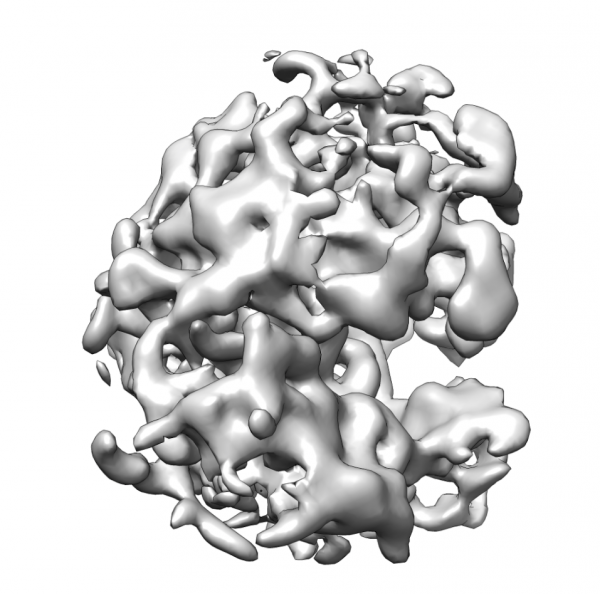Discovery may revolutionize new drug discoveries, disease research
TORONTO, February 9, 2017 - Research from York University’s Lassonde School of Engineering, has found a new set of algorithms that can help determine the 3D structure of proteins to one day find new treatments for a range of diseases including Alzheimer’s, HIV and cancer. The research, published in the current edition of the journal Nature Methods, shows that these new algorithms rapidly generate 3-D structures of viruses, which could revolutionize the development of new drug therapies.

One of the lead researchers on the project, Assistant Professor Marcus Brubaker, at the Lassonde School of Engineering, says that cryo-EM, had previously been a computationally demanding task.
“Collecting data on an electron microscope might take a few hours or maybe a day or two,” says Brubaker. “However, processing that data to determine the 3D structure would require weeks or even months of computation time on large, expensive computer clusters. Our work now makes this possible in a few hours on a relatively inexpensive desktop computer.”
Brubaker adds, the dramatic change in processing times not only speeds up the existing process, but will also enable experts to dig even deeper into their data to discover new biology that wouldn't have been practical before.
Drugs work by attaching to specific proteins in order to change the way they work inside the body. For a drug to be successful, it must be designed with a specific shape which binds only with the desired proteins while avoiding binding with other proteins which can cause side-effects. Electron cryomicroscopy (cryo-EM) is an experimental technique for measuring the 3D structure of small biological molecules. Cryo-EM uses a transmission electron microscope to take many thousands of low-quality 2D images of frozen protein molecules.
The algorithms, co-developed by U of T PhD student Ali Punjani, could significantly aid in the development of new drugs because they provide a faster, more efficient means of arriving at the correct structure.
“Our developments have also enabled us to determine structures without any prior knowledge opening up an entire new class of molecules that were unable to be studied otherwise," says Brubaker.
“Any symptom or disease in our body has some protein interaction component to it. So whether it’s Alzheimer’s or cancer, our ability to understand what’s happening at the cellular level and then target those behaviours, is really the basis of treatment and diagnosis of disease. To the extent that we’re able to develop tools to allow researchers to study these structures in ways they’ve never been able to before, the impact is boundless in terms of what it could mean for disease research.”
Together, Punjani and Brubaker founded the Toronto-based start-up, Structura Biotechnology Inc. that is developing the algorithms into a new cryo-EM software package called cryoSPARC for use in academic and industrial labs. Structura has received funding and support from U of T’s Innovations and Partnership’s Office (IPO) through the Connaught Innovation Award, U of T’s Early Stage Technologies (UTEST) program, the Ontario Centres of Excellence (OCE), and FedDev Ontario’s Investing in Commercialization Partnerships program at York University.
The research was done in collaboration with U of T Professors David Fleet and John Rubinstein with funding from the Natural Sciences and Engineering Research Council of Canada (NSERC).
York University is known for championing new ways of thinking that drive teaching and research excellence. Our students receive the education they need to create big ideas that make an impact on the world. Meaningful and sometimes unexpected careers result from cross-discipline programming, innovative course design and diverse experiential learning opportunities. York students and graduates push limits, achieve goals and find solutions to the world’s most pressing social challenges, empowered by a strong community that opens minds. York U is an internationally recognized research university – our 11 faculties and 26 research centres have partnerships with 200+ leading universities worldwide. Located in Toronto, York is the third largest university in Canada, with a strong community of 53,000 students, 7,000 faculty and administrative staff, and more than 295,000 alumni.York U's fully bilingual Glendon campus is home to Southern Ontario's Centre of Excellence for French Language and Bilingual Postsecondary Education.
Media contact:
Anjum Nayyar, Media Relations, 416 736 2100 ext. 44543






